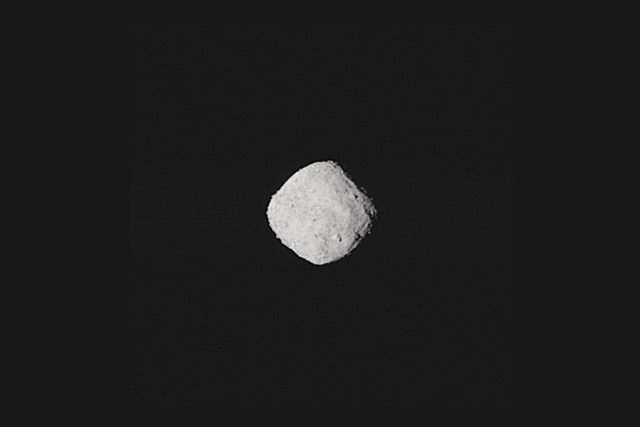
The first images of the Bennu asteroid, target of the OSIRIS-REx spacecraft mission, have been shared by NASA. The craft, fully titled the “Origins Spectral Interpretation Resource Identification Security – Regolith Explorer” (OSIRIS-REx), set out on September 8 2016 and is currently around a month out from its destination. It will collect a sample from the Bennu asteroid and bring it back to Earth for scientists to study, in order to answer questions about the early solar system and to learn about both the hazards and the resources that exist in near-Earth space.
The Bennu asteroid was chosen for study for reasons both practical — because it is relatively close to the Earth and is large enough to spin slowly, making it easier to touch down on — and scientific — because the asteroid is very old, potentially even older than the solar system itself, and is well preserved. Scientists believe that it could be a kind of time capsule, showing conditions of the early solar system, and that it could even give clues about the origin of life.
Bennu is around 500m in diameter, making it a little larger than the height of the Empire State Building, and is believed to be a fragment of a catastrophic collision between two larger asteroids that occurred between 1 billion and 2 billion years ago. The asteroid is rich in carbon, which is critical for life-forming compounds on Earth, and it is thought to contain organic molecules like adenine, guanine, hypoxanthine, and more. Most importantly for the potential formation of life, there could also be water trapped in the minerals that make up the asteroid.

The OSIRIS-REx craft is on course to touch down on Bennu’s surface in July 2020, when it will collect between 60 and 2,000 grams of dirt and rocks from the asteroid, depending on the conditions there. If the probe is successful in gathering 2,000 grams of material, it would be by far the largest sample collected from a space object since the Apollo Moon landing brought back moon rocks. The sample will be packed up safely into a capsule inside the craft and will be sent back to Earth, where it should be dropped into the west desert of Utah in 2023.
The sixteen images of Bennu released this week show the OSIRIS-REx craft approaching the asteroid at the rate of one image per day, starting at 27,340 miles out from Bennu and ending at just 200 miles out.
Editors' Recommendations
- Psyche spacecraft sends data back to Earth using lasers for the first time
- NASA, Boeing delay Starliner’s first crewed flight again
- Asteroid impacted by spacecraft is reshaped like an M&M ‘with a bite taken out’
- NASA automated system predicts asteroid impact over Germany
- NASA readies Starliner spacecraft for first crewed flight to ISS




